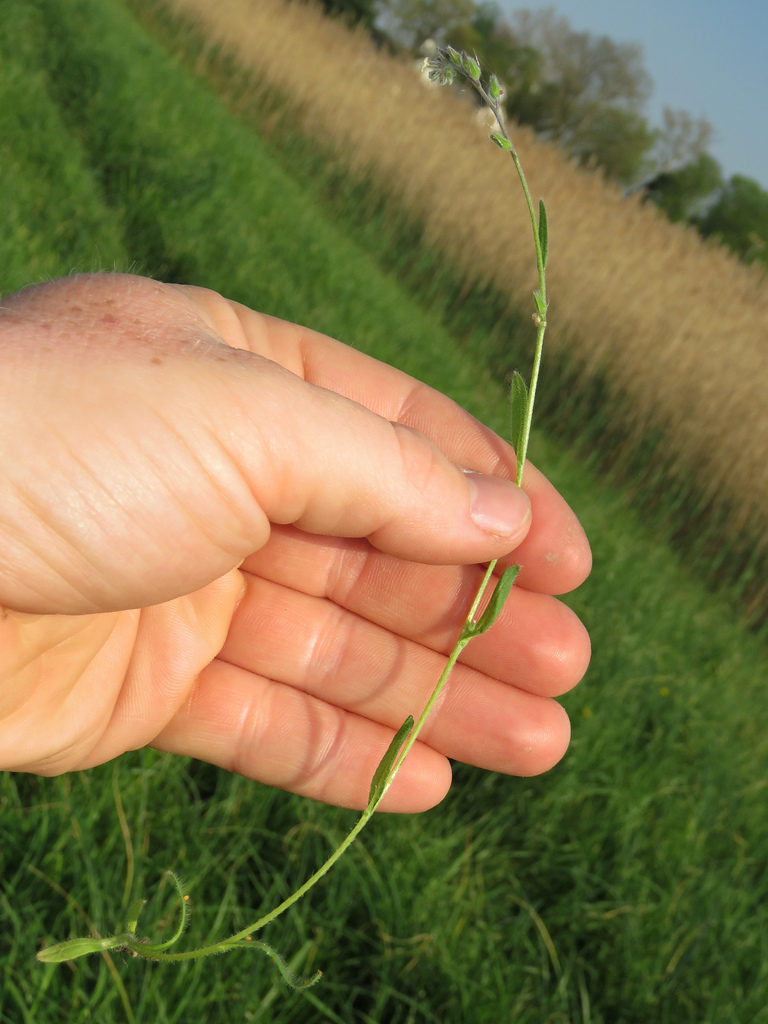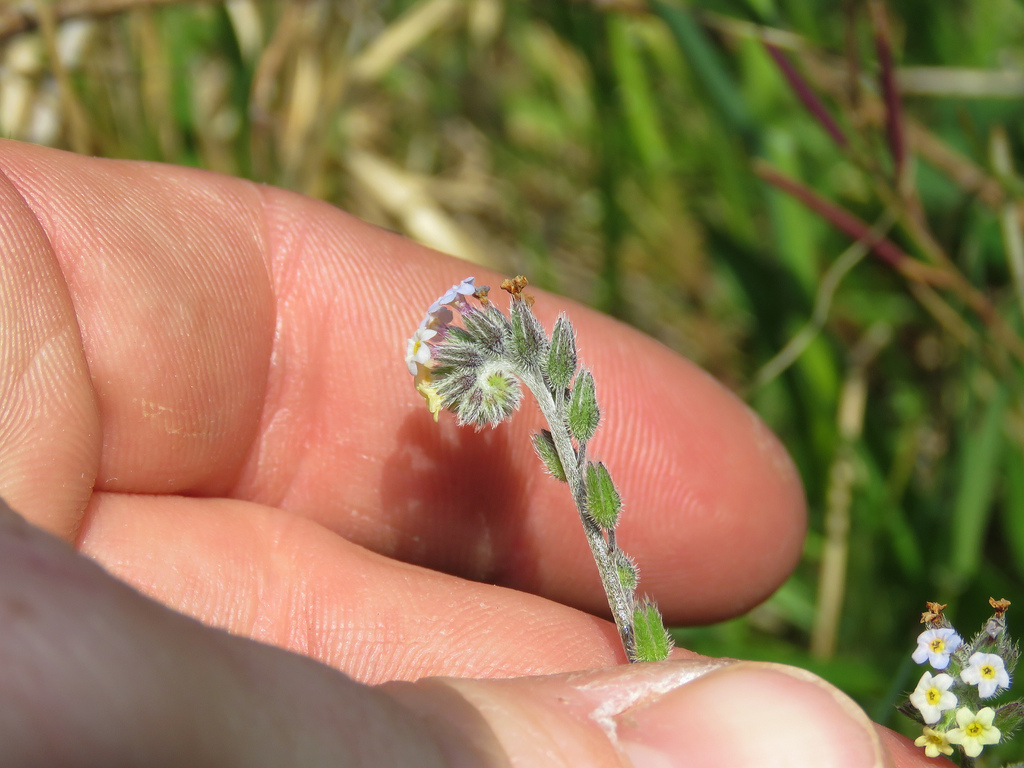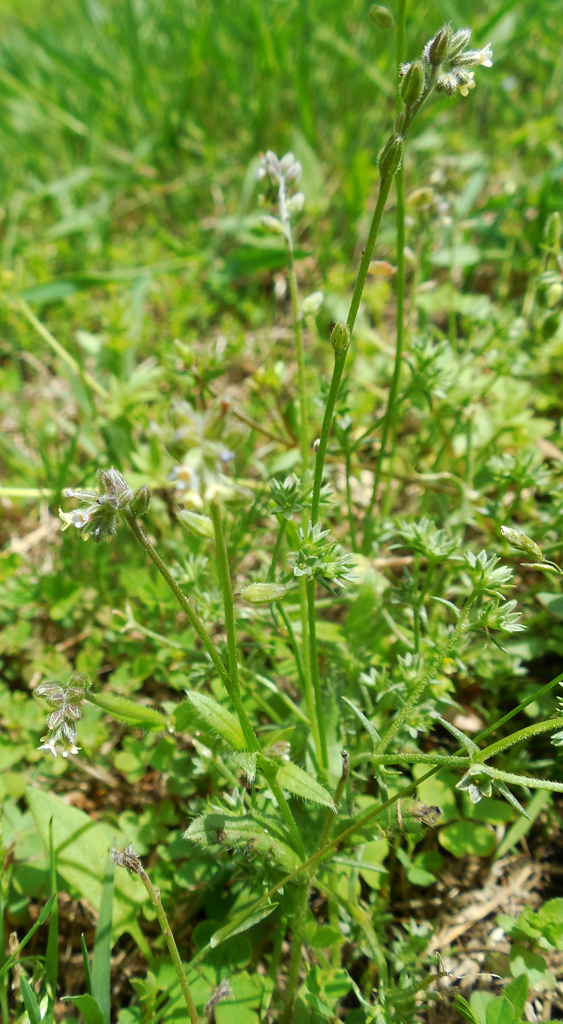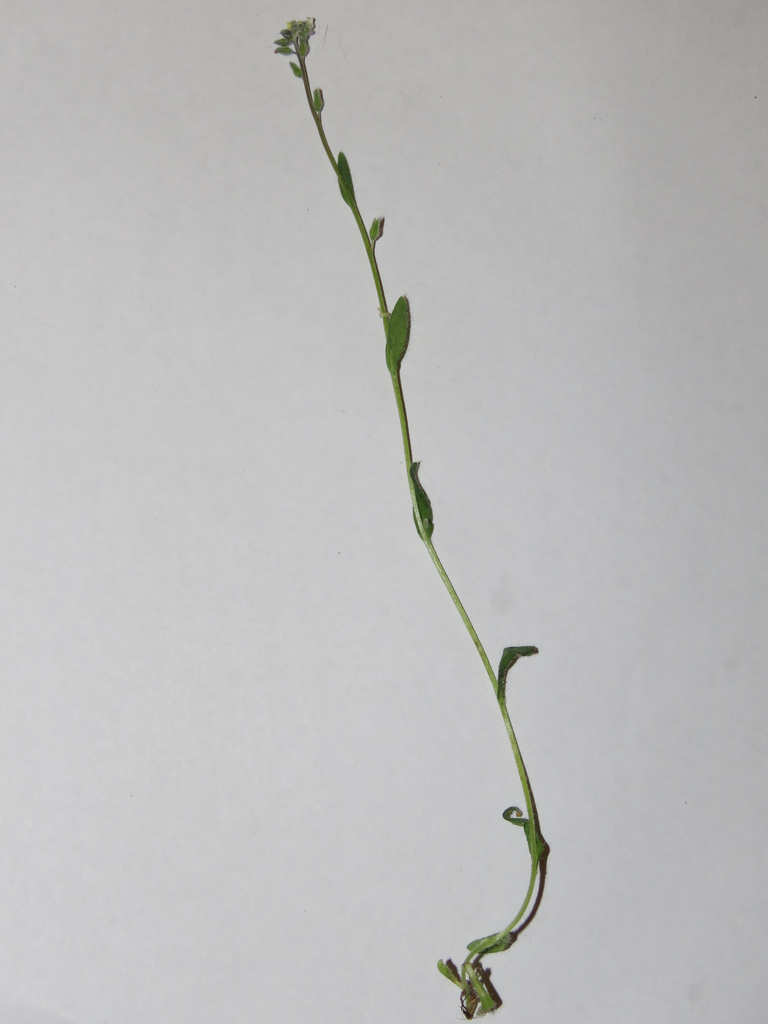Map Snapshot






11 Records
Status
Status is hard to gauge since this species is very easily confused with Strict Forget-me-not, and Field Forget-me-not. Public opinion, which is most likely false, is that Strict Forget-me-not is the de facto small Myosotis of open weedy areas in Maryland. All records in the MBP database are from the Coastal Plain, but it is most likely found on the Piedmont.
Description
To differentiate from Field Forget-me-not compare the pedicel length. Fruiting pedicels of Field Forget-me-not are either equal to, or longer than the calyx. Changing Forget-me-not has fruiting pedicels that are shorter than the calyx.
Difficult to differentiate from Strict Forget-me-not. Mericarps of Strict Forget-me-not longer than the styles. Changing Forget-me-not has mericarps that are shorter than the styles. Most keys state that Changing Forget-me-not only has flowers from mid-stem and up, compared to Strict Forget-me-not that has flowers along the stem almost to the base of the plant. Changing Forget-me-not lacks uncinate (hook tipped) hairs along the mid-vein of the abaxial surface of the leaves, compared with Strict Forget-me-not which has uncinate hairs on the mid-vein of the abaxial surface of the leaves.
Young plants can not be safely identified to species, and should be labeled as
Myosotis discolor/stricta.
Where To Find
Open weedy areas with full sun and short grass; roadside edges, edges of parking lots, and field edges.
Seasonality Snapshot
Source: Wikipedia
| Myosotis discolor | |
|---|---|

| |
| Scientific classification | |
| Kingdom: | Plantae |
| Clade: | Tracheophytes |
| Clade: | Angiosperms |
| Clade: | Eudicots |
| Clade: | Asterids |
| Order: | Boraginales |
| Family: | Boraginaceae |
| Genus: | Myosotis |
| Species: | M. discolor
|
| Binomial name | |
| Myosotis discolor | |
Myosotis discolor is a species of forget-me-not known by the common name changing forget-me-not. It is native to Europe, and it can also be found throughout eastern and western North America, where it is an introduced species. It grows in many types of habitat, including disturbed areas such as roadsides.
Description
[edit]It is a hairy annual or perennial herb growing 10 to 50 centimeters tall with a slender, sometimes branching, erect stem. The sparse linear, lance-shaped, or oblong leaves are up to 4 centimeters long and under a centimeter wide. They are coated in straight hairs. The inflorescence is a coiled or curved array of tiny (less than 2mm) flowers at the top of the stem. The flowers are initially yellow or cream, changing to pink and then to blue as they mature, giving rise to the common name.[1]: 208 [2]: 564
Gallery
[edit]Inflorescences
[edit]-
Tom McCall Preserve, Oregon
-
Great Holland Pits, Essex, UK
-
Unterfranken, Germany
-
Parksville, BC
Flowers
[edit]-
Rügen, Germany
-
Unterfranken, Germany
Herbarium
[edit]-
University and Jepson Herbaria, University of California
Botanical illustrations
[edit]-
Plate 16 in Joseph Sturm's Deutschlands Flora in Abbildungen (1796), vol. 11
-
Plate 631 in Flora Batava, vol. 8
-
Plate 223 in Martin Cilenšek's Naše škodljive rastline (1892)
References
[edit]- ^ Blamey, M.; Fitter, R.; Fitter, A (2003). Wild flowers of Britain and Ireland: The Complete Guide to the British and Irish Flora. London: A & C Black. ISBN 978-1408179505.
- ^ Stace, C. A. (2010). New Flora of the British Isles (Third ed.). Cambridge, U.K.: Cambridge University Press. ISBN 9780521707725.
External links
[edit]















